What's New
Displaying results 2171 - 2180 of 4052
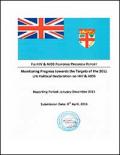
Resource | Publications,
This country report will enable readers to learn of the collective successes that Fiji has experienced with the HIV response particularly in 2015. Even though progress has been achieved globally, regionally and locally in stemming the tide of the HIV transmission and AIDS related death, there is still a need to multiply our investment and commitment to ensure that our response is sustained producing tangible results and it also has a high impact.
In certain parts of the world, the end of HIV is already in sight. Fiji continues to strengthen its response with the World AIDS Day *WAD+ theme “AIDS WILL LOSE”, which has been in place for the past 2 years following the endorsement of the theme by the HIV/AIDS Board. The theme certainly reminds us that there is no room for complacency and this is not a time to decelerate our efforts. Let us continue to strengthen our bond and our bid to accelerate progress towards an AIDS-free generation.
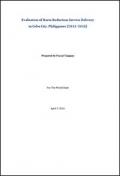
Resource | Publications,
The Philippines has been identified as one of nine countries in the world where HIV continues to increase at an alarming rate of more than 25 percent. HIV transmission among people who inject drugs (PWID) expanded rapidly in recent years, from less than 1 percent in 2005 to more than 5 percent in the past five years. There are between 12,304 and 16,607 PWID living in the Philippines, with the majority—an estimated 6,000 PWID—in Metro Cebu and between 2,000 and 2,500 in Cebu City. HIV and Hepatitis C Virus (HCV) rates among this group have been estimated at 41.6 percent and 70 percent, respectively. In Cebu City, up to 74 percent of people living with HIV contracted the virus through needle sharing, and 99 percent of infections among PWID were reported in Metro Cebu.
In March 2013, Population Services International (PSI) was contracted to lead the implementation of the Big Cities Project (BCP) between April 15, 2013 and December 31, 2015 with a total budget of US$1,840,000 committed by the World Bank and the Asian Development Bank (ADB). The ultimate goal of the project was to reduce HIV transmission by reducing risk behaviors among PWID. Specifically, implementation of the BCP aimed to develop friendly drop-in center (DIC) and outreach services; increase demand and uptake of health services through improved peer education and support; and strengthen governance for development and implementation of sustainable, evidencebased policies and interventions.
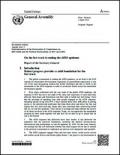
Resource | Publications,
The global commitment to ending the AIDS epidemic, as set forth in the 2030 Agenda for Sustainable Development, represents an unparalleled opportunity to end one of the most devastating modern-day health challenges and also to build on the momentum of the AIDS response in order to accelerate results across the sustainable development agenda. Even when confronted with the vast scale of the global AIDS epidemic, the response to HIV has never lost sight of the value and experience of each individual affected, their hopes and frustrations and their right to health and well-being.
Through a fast-track, multisectoral response to AIDS, and through making more strategic use of the machinery built by the response, considerable contributions to a range of Sustainable Development Goals will be made, including on poverty elimination, food and nutrition security, health, gender equality, decent work, reducing inequalities, cities, justice and inclusive institutions and partnership.
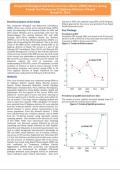
Resource | Fact Sheets,
This Integrated Biological and Behavioral Surveillance (IBBS) survey was carried out by Intrepid Nepal (INPL) under the leadership of the National Center for AIDS and STD Control (NCASC) and in partnership with Save the Children-Nepal. The existing National HIV and AIDS Strategy (2011-2016) identifies Female Sex Workers (FSWs) as one of the key affected populations (KAPs) at a higher risk of spreading the HIV epidemic. This is the sixth round of the IBBS survey conducted among FSWs in 22 highway districts of Nepal. The survey is a part of the National HIV Surveillance Plan (2012) and National HIV and AIDS Strategy (2011-2016).
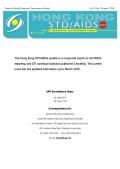
Resource | Publications,
The Hong Kong STD/AIDS update is a composite report on HIV/AIDS reporting and STI caseload statistics published 3 monthly. The current issue has the updated information up to March 2016.
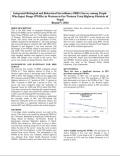
Resource | Fact Sheets,
This is the fifth round of Integrated Biological and Behavioral (IBBS) survey conducted among People who Inject Drugs (PWIDs) male in 7 Terai highway districts of Western, Mid-Western and Far-Western regions of Nepal. This survey finds out the prevalence of HIV, Syphilis, Hepatitis B and Hepatitis C. The drug injecting and sexual risk behavior related to HIV and AIDS, STIs, Hepatitis B, and Hepatitis C has been assessed. The knowledge of the PWIDs related to prevention of HIV and AIDS, STIs and HCV and their health care seeking behavior has also been identified. Cross-Sectional two-stage sampling methods were applied to recruit sample, where 300 samples were covered in this survey. This survey was carried out during February- March 2016.
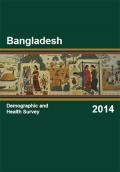
Resource | Publications,
Bangladesh Demographic and Health Survey (BDHS) 2014 is the seventh survey of its kind conducted in Bangladesh. This survey was implemented through a collaborative effort of the National Institute of Population Research and Training (NIPORT), ICF International, USA and Mitra & Associates. The wealth of demographic and health data that BDHS 2014 provides is essential and instrumental in monitoring and evaluating the performance of the Health, Population and Nutrition Sector Development Program (HPNSDP). BDHS presents estimates for 18 indicators of the Results Framework of HPNSDP and considered as a major source of information for program monitoring.
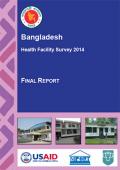
Resource | Publications,
The 2014 Bangladesh Health Facility Survey (BHFS) is the third of its kind. The survey collected information from all seven administrative divisions on the preparedness of health facilities to provide high quality care that met the minimum requirement of WHO indicators for clients who sought services for family planning, maternal health, and child health, as well as tuberculosis and selected noncommunicable diseases (NCDs). The survey presented results separately for the seven administrative divisions, all seven types of public facilities—district hospitals (DHs), maternal and child welfare centers (MCWCs), upazila health complexes (UHCs), upgraded union health and family welfare centers (upgraded UHFWCs), union health and family welfare centers (UHFWCs), union sub-centers/rural dispensaries (USCs/RDs), and community clinics (CCs)—as well as private hospitals with at least 20 beds and NGO static clinics and hospitals.
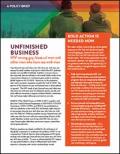
Resource | Publications,
Gay, bisexual men and other men who have sex with men are among the small number of groups for which the HIV epidemic remains uncontrolled worldwide. Inability to mount true-to fact responses that are tailored to the sexual health needs of our communities threatens to undermine gains made in reaching global targets set by UNAIDS. Moreover, in the premature and overly optimistic stampede towards the "end of AIDS", the gravity of the situation for gay and bisexual men is down-played or ignored. The HIV needs of gay, bisexual men and other men who have sex with men must be addressed openly, quickly, and with sufficient resources to support evidence-based, communityled, and human rights-affirming interventions at scale.
We need a bolder, more evidence-driven global response to HIV that isn’t fearful of openly acknowledging gay, bisexual men and other men who have sex with men and their sexual health needs. HIV service approaches must be developed, updated, and aligned with normative guidance endorsed by UN agencies.
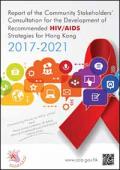
Resource | Publications,
Since 1994, the Advisory Council on AIDS (ACA) has produced five sets of recommended strategies for Hong Kong to advise the government on her responses to HIV/AIDS, including programmes and services, funding and policies. The latest set of strategies is for the year of 2012-2016. There is a need to formulate another set for the year of 2017-2021 in light of the current HIV/AIDS epidemic.
The ACA adopts a broad-based, participatory and integrated approach to formulate the recommended HIV/AIDS strategies for Hong Kong 2017-2021.





